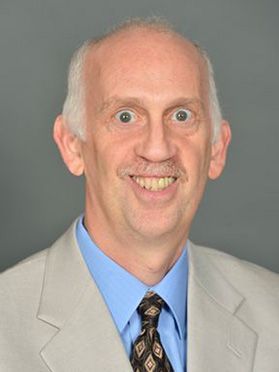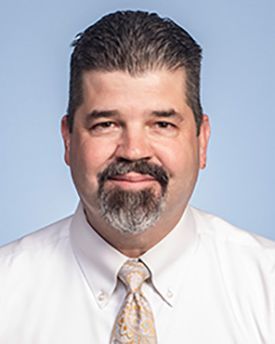Pitch originally posted at WVU Today
Experts at West Virginia University in a variety of fields are available to discuss the aftermath of the Feb. 3 train derailment in East Palestine, Ohio. (WVU Photo)
West Virginia University experts in fields ranging from law to health to water quality can provide insights into potential community effects near the East Palestine, Ohio, site of the Feb. 3 train derailment and subsequent chemical fire.
Jesse Richardson with the
College of Law,
Timothy Nurkiewicz with the
School of Medicine,
Michael McCawley with the
School of Public Health,
Nicolas Zegre with the
Davis College of Agriculture, Natural Resources and Design, and
Paul Ziemkiewicz, director of the
West Virginia Water Research Institute, are available to speak from their various
areas of expertise.
Quotes:

Paul Ziemkiewicz, director, West Virginia Water Research Institute at WVU (WVU Photo)
“The derailment occurred in East Palestine, Ohio, and there are several creeks in the area that drain to the Ohio River. They are about 16 miles from the river. About half of any vinyl chloride entering the creek leading to the Ohio River would be volatilized every two hours. The distance from East Palestine to the river is about six miles. Assume the stream is flowing at about 22 minutes per mile and the maximum concentration of vinyl chloride in water is about 2.7 mg/L. So, whatever the starting concentration, it would be reduced by about 87% over the 16-mile distance to the river. Whatever reaches the river would be diluted by the 35,500 cubic feet per second of river flow on Feb. 3, 2023.
“There was a map showing the Ohio River watershed with the implication that all tributary
streams within the watershed would be contaminated. That’s incorrect since water
flows downhill from the outer reaches of the watershed to the Ohio River, not the
other way. So, the only waters that could possibly be affected would be the
creek leading to the river from the derailment site and the river itself. There
are dams along the river and they maintain a pool elevation for navigational purposes. As
a result, the pool levels would determine the maximum level that Ohio River water
could reach.”
— Paul Ziemkiewicz, director, West Virginia Water Research Institute at WVU

Jesse Richardson, professor of law, lead land use attorney, WVU College of Law (WVU Photo)
“The most pressing issue is the lack of transparency and lack of information sharing. Citizens in East Palestine and surrounding communities are understandably concerned about whether the air is safe to breathe and the water is safe to drink. EPA Administrator Michael Regan told residents to ‘trust the government.’ That's not enough. The residents need data and facts. Norfolk Southern and the state and federal governments need to be more forthcoming.
“Related to this, the United States initially failed to deploy the Federal Emergency Management Agency to the area, saying the agency doesn't respond to these types of emergencies. The federal government has since changed its mind and is deploying FEMA, but a rapid deployment would have reassured residents that they have some help.
“The federal government has given notice to Norfolk Southern under the Comprehensive Environmental Response, Compensation and Liability Act that the government intends to hold the company responsible for the cleanup of the spill. In addition, federal and state laws set out emergency response protocols.
“Stricter regulations that were considered in the past for speed limits, stronger
rail cars, better brakes and more transparency to state and local officials are
being reconsidered now. Some of the cars on the train that derailed were better
able to withstand the crash without rupturing, but not all of the cars had been
updated. Regulations expanding the scope of hazardous materials subject to heightened
regulation during transport were also rejected in the past.”
— Jesse Richardson, professor of law, lead land use attorney, WVU College of Law

Timothy Nurkiewicz, professor and chair, Department of Physiology, Pharmacology and Toxicology, WVU School of Medicine (WVU Photo)
“At this time, it is difficult to assess the scope of the impact this will ultimately have (near the crash site). Chemicals were spilled, and a potent mixture of toxicants were aerosolized on a massive, uncontained scale. Acute toxicities have been observed in wildlife and humans, but the situation has changed in the past couple of weeks. It may no longer be possible to identify what caused these acute effects. However, the environment and greater ecosystem must be robustly monitored if future adverse health effects are to be avoided.
“Incomplete combustion of vinyl chloride resulted in the creation of a complex mixture
of toxicants. In general, this aerosol was a mixture of a gases and solid particles
that, when considered together, is capable of a larger area of effect on the ecosystem.
Further, when inhaled, mixtures of this type are capable of penetrating into the
deep lung and causing more harm.”
— Timothy Nurkiewicz, professor and chair, Department of Physiology, Pharmacology
& Toxicology, WVU School of Medicine
“Soil retains the chemicals that spilled. Those chemicals are volatile, and the soil can become a ‘sink’ from which entrained, spilled chemicals could volatilize, becoming resuspended in the air — thus the concern and the potential need for quickly removing that soil as a source.” — Michael McCawley, clinical associate professor, Department of Occupational and Environmental Health Sciences, WVU School of Public Health

Michael McCawley, clinical associate professor, Department of Occupational and Environmental Health Sciences, WVU School of Public Health (WVU Photo)
Nicolas Zegre, associate professor of forest hydrology, WVU Davis College of Agriculture, Natural Resources and Design (WVU Photo)
“Soils and hillslopes play a critical role in generating streamflow. When rain hits the ground or when snow melts, water flows through soils and overland more easily. The wetter soils are, the more connected seemingly disconnected locations are on the landscape to streams and rivers. One of the consequences of a warming atmosphere is more frequent and intense rain, something we all are aware of from our lived experiences. With more rain, soils are wetter, especially the clay soils that dominate our region, and especially during winter when most of our trees are dormant and not returning water back to the atmosphere through transpiration. As a result, there is greater potential for contaminants that are released on to the land surface to be dispersed downslope and downstream. Furthermore, once contaminants are below the surface, groundwater further disperses pollution, increasing the challenges of containment and clean up. So indirectly, climate change is increasing the complexity of the problem. This is especially true since most of policies, practices and rules that are designed to protect people and the environment are based on last century’s rainfall. Society, as a whole, is woefully underprepared to address disasters like the derailment in East Palestine.
“To the best of my knowledge, the prevailing winds are blowing away from West Virginia,
but the Ohio River does ‘touch’ West Virginia as it forms part of our western boundary.
As water flows downstream, it will mix with water stored in the alluvial aquifers
along the banks of the Ohio River. Some communities and industries along the Ohio
River use water that is pumped from these alluvial aquifers that could become contaminated
by the vinyl chloride soiled in East Palestine. The cases of misinformation around
the derailment highlights the importance of citizens becoming knowledgeable about
how the world in which they live works. A great resource to learn how East Palestine
is hydrologically connected to communities downstream can be found here –
https://river-runner.samlearner.com/.
— Nicolas Zegre, associate professor of forest hydrology, WVU Davis College of
Agriculture, Natural Resources and Design
West Virginia University experts can provide commentary, insights and opinions on various news topics. Search for an expert by name, title, area of expertise or college/school/department in the Experts Database at WVU Today.
Editor’s Note: At this time, West Virginia University has no reason to believe the chemicals from the Ohio train derailment pose a threat to the WVU Morgantown Campus community. Multiple agencies, including the local utility board and the University, are monitoring air and water quality, and there has been no change in quality. WVU will continue to monitor the situation and, if something should change, alert students and families.
-WVU-
ls-js/02/21/23
MEDIA CONTACT: Jake Stump
Director
WVU Research Communications
304-293-5507;
jake.stump@mail.wvu.edu
Call 1-855-WVU-News for the latest West Virginia University news and information from WVUToday.
Follow @WVUToday on Twitter.